Beans have been a staple ingredient in diets across the globe for centuries, providing not just a source of sustenance but also a myriad of health benefits. Among the most popular beans in North and South America are black and pinto beans. But what sets them apart? At first glance, it might be just the color, but there’s more to explore.
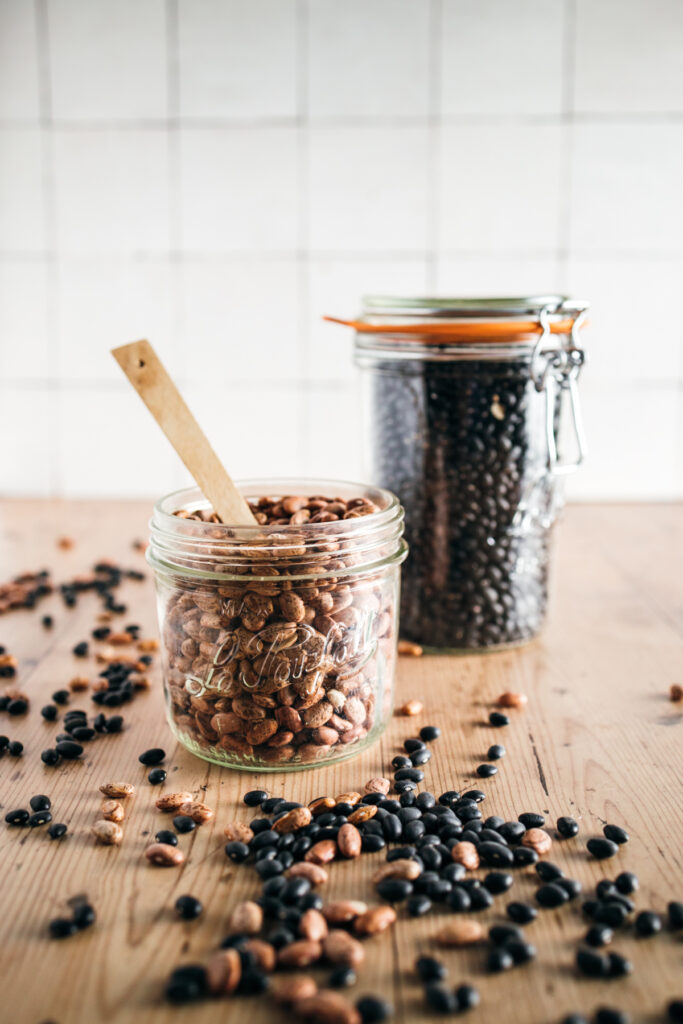
About Black Beans
Also known as ‘turtle beans’ or ‘black turtle beans’, black beans have a deep history in Latin American and Caribbean dishes. Their unmistakable black color is a visual hint of their dense nutritional content.
Color & Appearance
Their black color is both unique and indicative of their nutritional profile, giving them their easily recognizable smooth, oval shape.
Taste & Texture
The rich, earthy flavor and soft texture of black beans make them an ideal choice for a range of dishes. From a hearty side dish to a main course, they always add a touch of rich flavor.
Nutritional Profile
Black beans are nutritional powerhouses. Just a cup of black beans boasts 15 grams of protein, 41 grams of carbohydrates, 15 grams of fiber, and 1 gram of fat.
Black beans are an excellent source of folate, copper, thiamine, manganese, magnesium, and iron. In addition, they are a good source of phosphorus and potassium. Black beans are also a great source of antioxidants, particularly anthocyanins, that help combat oxidative processes in the body [1].
Culinary Uses
From the national dish of Brazil, feijoada, to various Caribbean dishes, black beans are versatile. In the United States, black bean dip and black beans with brown rice are classic favorites.
Health Benefits
Black beans have been found to stabilize blood sugar [2]. They also play a role in lowering blood pressure, reducing cholesterol levels, and decreasing the risk of heart disease [1]. Black bean’s high fiber composition may also benefit those with depression [3].
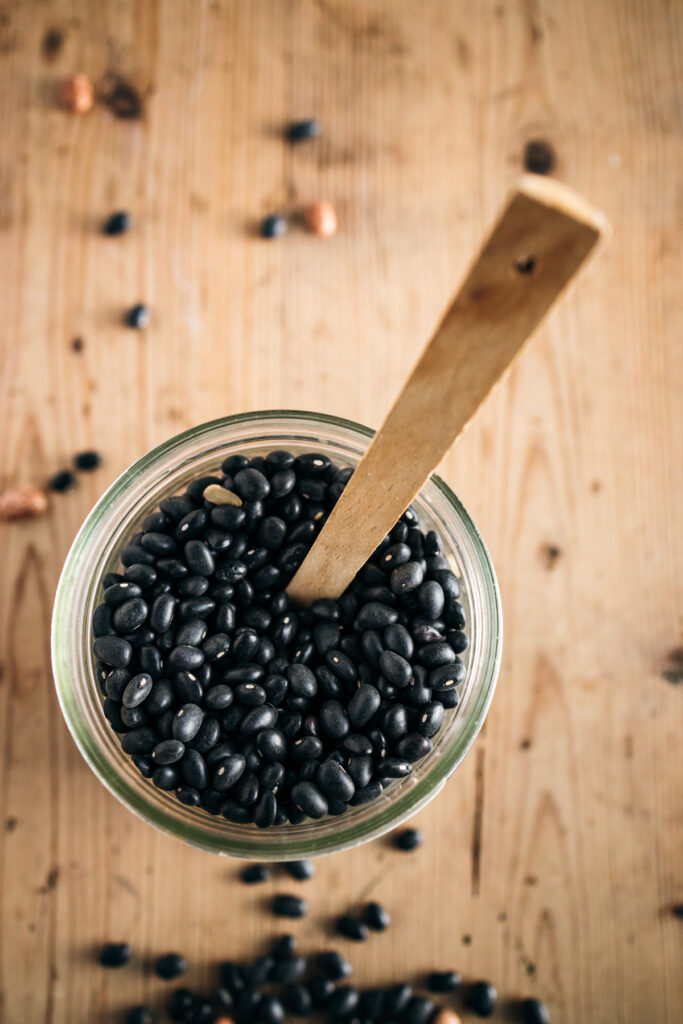
About Pinto Beans
Pinto beans, with their speckled appearance, are central to Mexican cuisine and also feature in many dishes in the Southwestern United States.
Color & Appearance
These beans, at first glance, sport a beige hue dotted with reddish-brown spots but turn a solid brown when cooked.
Taste & Texture
Their nutty taste and creamy texture make them the best way to enhance many Mexican dishes, especially when mashed as refried beans.
Nutritional Profile
Pinto beans are packed with healthy plant-based nutrition. One cup of cooked pinto beans contains a total of 245 calories. (15 grams of protein, 45 grams of carbohydrates, 15 grams of dietary fiber, and 1 gram of fat.)
Pinto beans are an excellent source of thiamine, iron, magnesium, copper, potassium, phosphorus, and vitamin B6. In addition, they are also a good source of niacin, choline, and vitamin C. Pinto beans are also high in antioxidants, specifically the flavonoid kaempferol.
Culinary Uses
Pinto beans are essential in Mexican and American cuisines, finding their way into burritos, chilis, and even bean dips.
Health Benefits
Regular consumption of pinto beans can improve blood sugar control [4]. They have been shown to lower blood pressure, total cholesterol, and LCL cholesterol [5, 6].
Pinto beans are high in fiber. Fiber has been directly associated with improved mental health, specifically psychological distress and anxiety. In addition, fiber has been found to reduce the likelihood of depression in women [3].
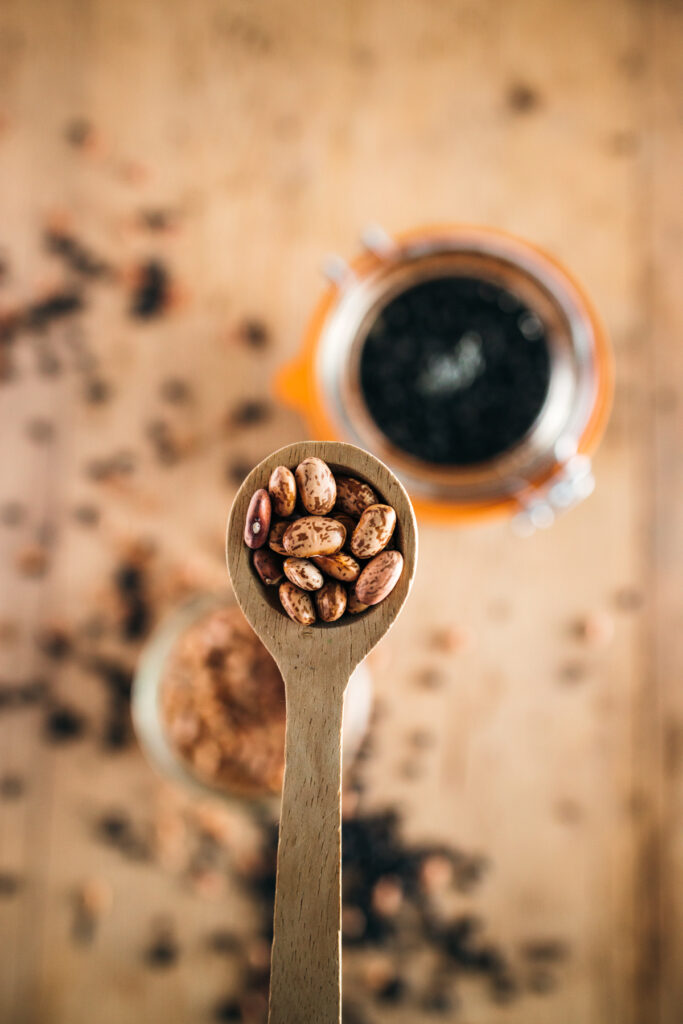
Comparing the Two
While at first glance, color might be the most noticeable difference, delving deeper reveals more nuances. Black beans have a slightly richer flavor, making them ideal for dishes that require a robust taste. Pinto beans, with their milder, nuttier profile, are often preferred in recipes where beans aren’t the dominant flavor.
Both beans, however, are staples in North American, Central American, and South American diets, showcasing their adaptability and widespread appeal.
When considering preparation, both beans follow a similar trajectory. Soaked beans, whether black or pinto, typically require between 60-90 minutes of cooking, with some variations depending on the cooking method. Whether using traditional methods or modern appliances like pressure cookers, achieving that perfect soft texture is crucial for the best culinary experience.
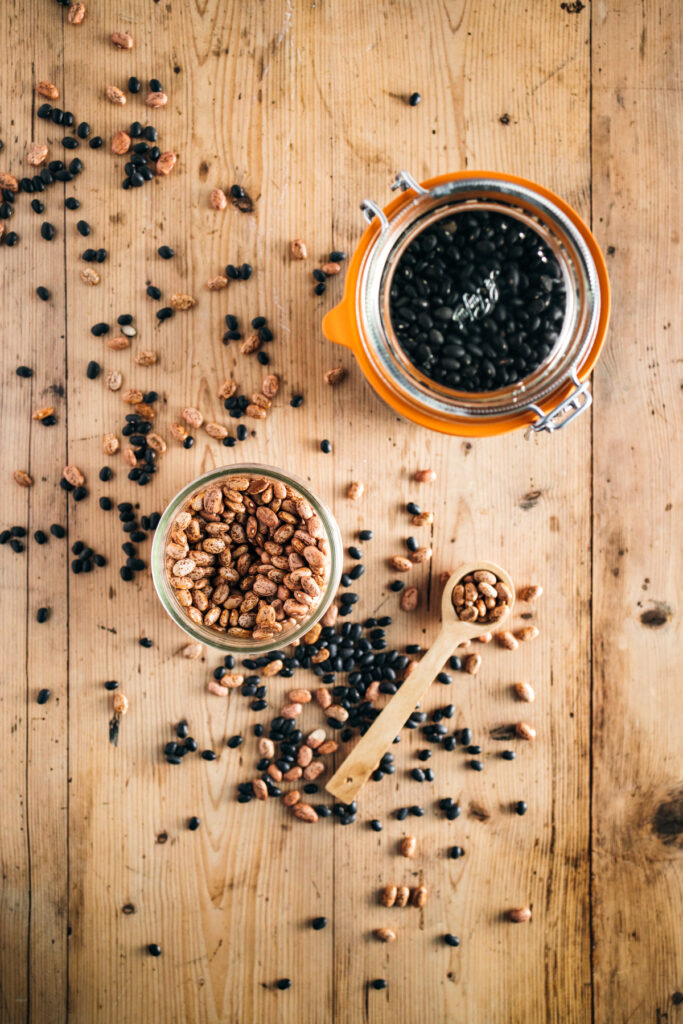
Cooking With Beans
If you’re ready to experience the nutritional benefits of beans, here are some recipes to start with!
If you are completely new to cooking with beans, I would suggest my plant-based cooking how-to’s, such as How To Cook Garbanzo Beans.
Try out a couple of fan-favorite recipes for dinner, including this Black Bean Veggie Burger and Chickpea Burger recipe. When it comes to soups, homemade Vegan Chili, Pumpkin Chili, Vegan Black Bean Soup, Classic Minestrone, Vegetable Soup, and Vegan Cabbage Soup are hits. Finally, the next time you head to a potluck, make up a batch of Cowboy Caviar. It’s sure to be a crowd-pleaser!
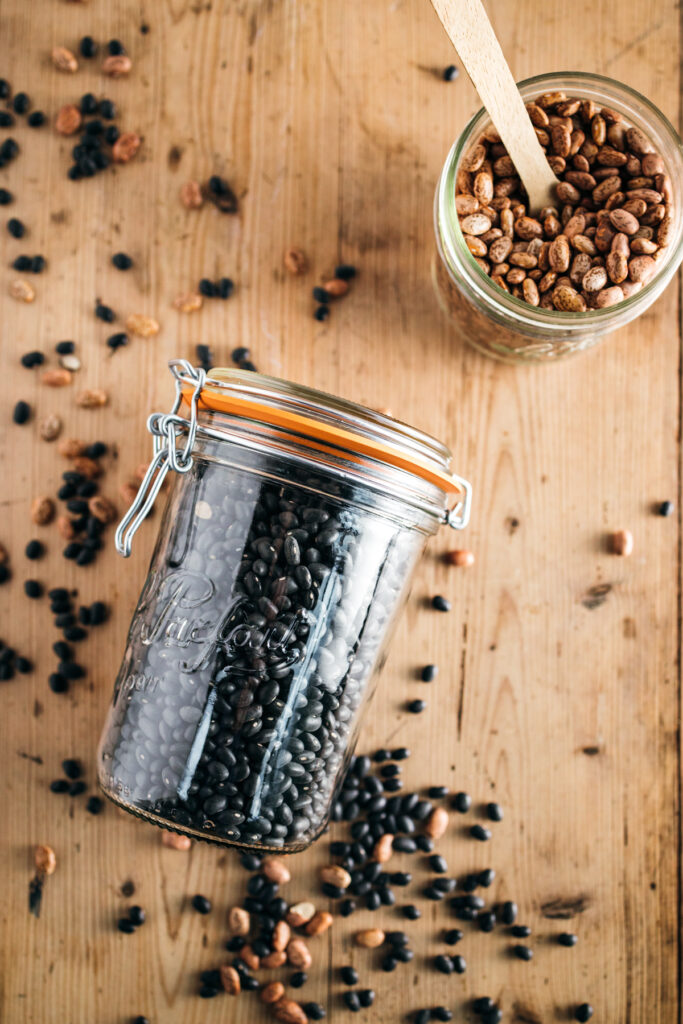
Final Words
As you explore the aisles of grocery stores or when deciding the menu for the week, consider the rich histories, vast nutritional benefits, and culinary versatility of beans. Both black and pinto beans, with their respective tastes, textures, and health benefits, offer a world of possibilities for those eager to savor and experiment. Dive into the world of beans, and enrich your diet with these nutritional powerhouses.
References
[1] Chávez-Mendoza, C., & Sánchez, E. (2017). Bioactive Compounds from Mexican Varieties of the Common Bean (Phaseolus vulgaris): Implications for Health. Molecules (Basel, Switzerland), 22(8), 1360. https://doi.org/10.3390/molecules22081360
[2] Reverri, E. J., Randolph, J. M., Steinberg, F. M., Kappagoda, C. T., Edirisinghe, I., & Burton-Freeman, B. M. (2015). Black Beans, Fiber, and Antioxidant Capacity Pilot Study: Examination of Whole Foods vs. Functional Components on Postprandial Metabolic, Oxidative Stress, and Inflammation in Adults with Metabolic Syndrome. Nutrients, 7(8), 6139–6154. https://doi.org/10.3390/nu7085273
[3] Saghafian, F., Sharif, N., Saneei, P., Keshteli, A. H., Hosseinzadeh-Attar, M. J., Afshar, H., Esmaillzadeh, A., & Adibi, P. (2021). Consumption of Dietary Fiber in Relation to Psychological Disorders in Adults. Frontiers in psychiatry, 12, 587468. https://doi.org/10.3389/fpsyt.2021.587468
[4] Thompson, S. V., Winham, D. M., & Hutchins, A. M. (2012). Bean and rice meals reduce postprandial glycemic response in adults with type 2 diabetes: a cross-over study. Nutrition journal, 11, 23. https://doi.org/10.1186/1475-2891-11-23
[5] Pluznick J. (2014). A novel SCFA receptor, the microbiota, and blood pressure regulation. Gut microbes, 5(2), 202–207. https://doi.org/10.4161/gmic.27492
[6] Nelson R. H. (2013). Hyperlipidemia as a risk factor for cardiovascular disease. Primary care, 40(1), 195–211. https://doi.org/10.1016/j.pop.2012.11.003
